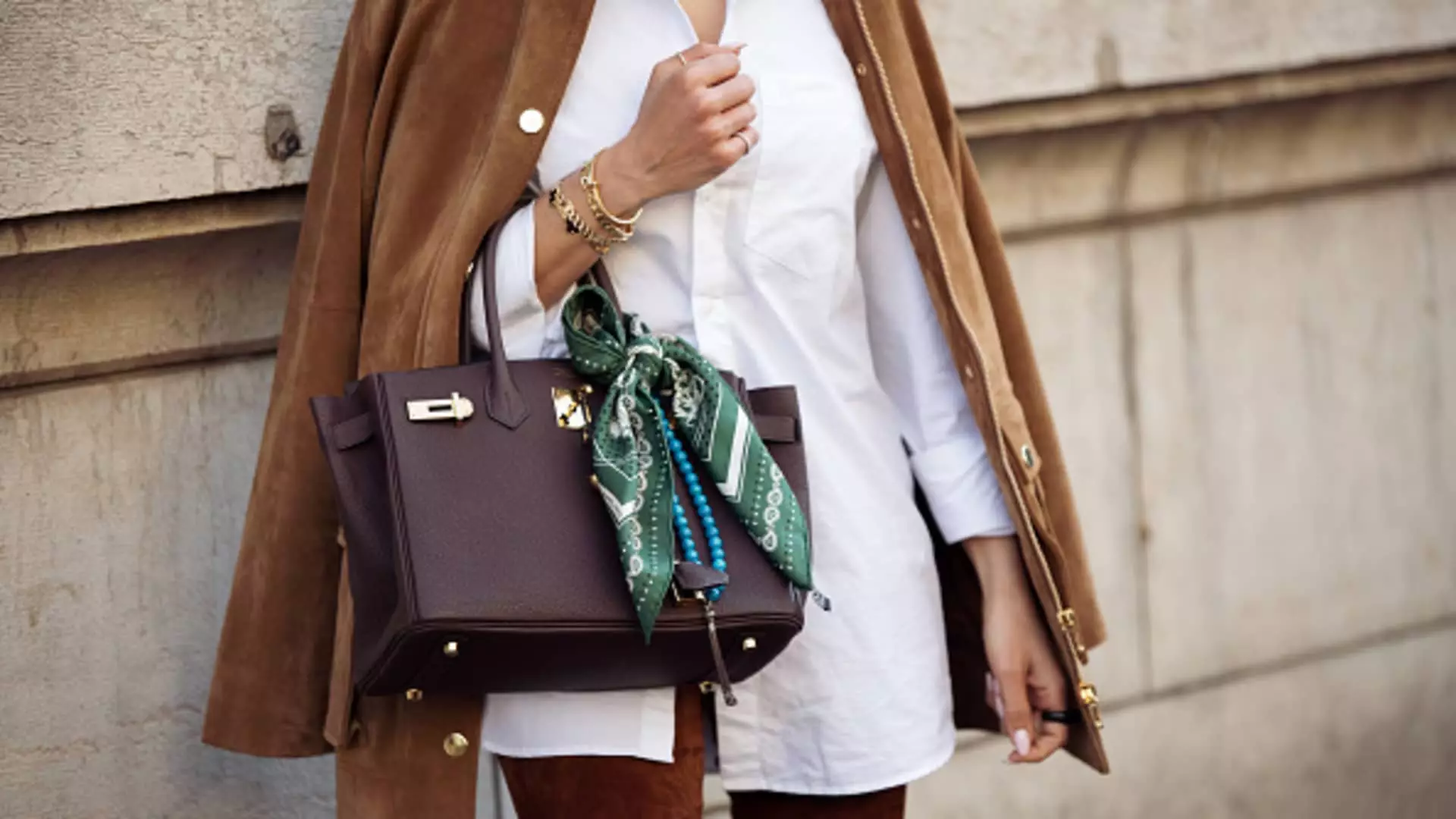In the world of luxury goods, few names stir admiration and aspiration quite like Hermès. Known for its indesputable craftsmanship and timeless products—from the coveted Birkin and Kelly handbags to the exquisite silk scarves—Hermès has recently made headlines with a significant corporate decision: a price increase specific to the U.S. market, aimed at countering tariffs imposed by the Trump administration. This move unveils the intricate intersection of politics and economics in the luxury sector, while also exposing underlying vulnerabilities in consumer behavior amidst rising price pressures.
Tariffs: An Unwelcomed Burden
The crux of Hermès’ decision lies in the 10% universal tariff levied by the U.S. government, a direct consequence of escalating trade tensions that have sparked widespread fear and uncertainty in various sectors, including luxury goods. Eric du Halgouët, Hermès’ finance chief, has explained that while these price hikes serve to offset increased import costs, they also send a jolting message: luxury goods are not immune to economic fluctuations. The impending price increases aren’t just a business strategy; they are a palpable reminder that the luxury market faces external shocks, even though its affluent clientele often bears the brunt of such hikes with relative ease.
However, this potentially precarious reliance on high-income consumers raises questions regarding market stability. What happens when the wealthy start reevaluating their spending habits in response to broader economic downturns? The forecasted consequences are stark—a chilling effect on luxury sales as consumer confidence wavers. In this context, Hermès’ ascent to overtake LVMH, although a remarkable achievement, offers little solace if their consumer base starts tightening their purse strings.
The Price Hike Debate
Hermès’ strategy to selectively increase prices poses ethical dilemmas in the broader luxury segment. On the one hand, the company can rationalize this move by asserting that it merely reflects increased costs. On the other, it inadvertently raises questions about accessibility and desire. To what extent should a brand like Hermès cater to hyper-affluent consumers at the expense of aspirational buyers? The luxury industry has historically thrived on exclusivity, but inclusion is becoming an increasingly popular narrative.
Moreover, this decision could also set a precedent for other brands to follow suit, potentially initiating a tidal wave of price increases across the luxury spectrum. While affluent consumers may withstand the pressure of higher prices, this move risks alienating the aspirational buyers and middle-class patrons who view luxury goods as rewards for their hard work. A ripple effect could emerge where brands that rely on status rather than substance may face backlash as consumers reevaluate what value means in today’s volatile economic climate.
Consumer Sentiment Amid Economic Anxiety
The luxury market isn’t somewhat isolated; it’s deeply enmeshed with global economic trends. The recent downturn in first-quarter sales reported by LVMH signals that even the titans of luxury cannot completely escape the ramifications of a shaky economy. Analysts caution that while luxury brands can absorb some shock by passing costs onto consumers, a more insidious challenge looms—the looming specter of diminished consumer appetite during times of economic uncertainty.
As fear of recession gnaws at consumer sentiment and contributes to an overall pullback in spending, even the elite may have to exercise caution in their purchasing decisions. In this regard, Hermès’ rising prices could unintentionally serve as a further deterrent, stifling sales growth in an industry that should ideally flourish in times of prosperity.
The Future of Luxury and Consumer Culture
The path forward for luxury brands like Hermès seems fraught with challenges. While elite clientele may continue to indulge in the finer things, the ability to consistently adjust prices upward could thin the market’s accessibility. This poses an existential question for luxury brands: Will the promise of quality and exclusivity be enough to sustain demand in a changing economic landscape rife with discontent?
As Hermès navigates through a tumultuous economic sea, it’s crucial for the brand—and the luxury sector at large—to consider not just their pricing strategies, but the broader narratives of value, accessibility, and sustainability. The question remains—amid tariffs and shifting consumer priorities, can the luxury industry transcend its traditional confines and evolve into something that aligns with contemporary societal values? Perhaps the future of luxury is not just in luxury itself but in the responsive nature of the market to the realities of today’s economy.

